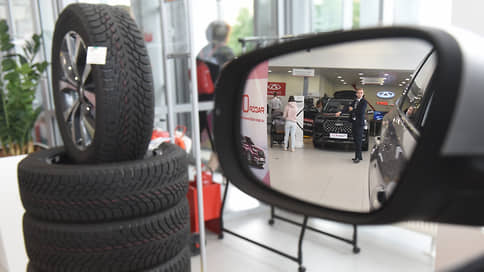Russians are now putting off buying a car more often than in 2021
[ad_1]

Russians are now postponing the purchase of a car more often than in 2021, rated B1. The car ownership period in the Russian Federation has indeed returned to growth in 2023, Avtostat calculated – in the mass segment, with the exception of Lada, it was 6.8 years. At the same time, postponing the purchase is mainly forced by the lack of offers – there is no shortage of cars only among SUVs costing from 2.5 million rubles, and in the more budget segment you can only choose among Lada models.
Russians postponed the purchase of a car in 2023 due to the geopolitical situation, according to research data from B1. Thus, 8% of respondents completely abandoned the purchase, another 57% postponed it for 1–2 years. As a result, the share of those wishing to upgrade their car in the next five years decreased by 11 percentage points compared to pre-crisis 2021 – to 78%.
Sergey Udalov from Avtostat notes that, although in general the answers in surveys may be far from the actual decisions of potential buyers, demand in the car market really began to decline by the end of 2023, and the average period of car ownership is growing. In terms of segments, as follows from Autostat data, the situation is the same: among Lada owners, the average ownership period was 8.4 years (versus 8.3 years in 2022), in the rest of the mass segment – 6.8 years (versus 6 .4 years), and in the premium one – 5.5 years (versus 5.2 years). At the same time, in the last two segments, the ownership period was reduced over the previous two years – we recall that in 2021, after the pandemic, the demand for cars was actively growing. And in the spring of 2022, Mr. Udalov notes, car owners sought to change their car here and now, selling it earlier than planned, as they were afraid of losing the opportunity to buy a new car amid the suspension of supplies of cars of most foreign brands to the Russian Federation.
In many ways, the purchase decision is now influenced not by the geopolitical situation, but by the availability of offers on the Russian market, says Sergei Udalov. Thus, no new models have appeared in the mass segment, with the exception of the Lada Vesta, which has returned to production. “That is, there is no choice in the form of a wide range of models, as there was before – Kia Rio, Hyundai Solaris, VW Polo, Skoda Rapid,” explains Mr. Udalov. “Only Vesta remains, and some customers are slowing down with the purchase or are trying to go to a more expensive the SUV segment, where there is an abundance of models, but prices are approximately 2.5 million rubles. and higher”.
Study B1 states that half of the respondents from Russia have a budget for purchasing a car of less than 1.5 million rubles. Currently, only Granta and Niva are included in the new proposals. Granta, we note, has become a bestseller on the Russian car market since the beginning of the crisis. The most popular foreign car – Haval Jolion – starts from about 2 million rubles, and the weighted average price for the model, according to Autostat, is 2.3 million rubles.
The majority of respondents to the B1 survey from the Russian Federation – 61% – are ready to switch to products of the Chinese automobile industry, and 62% are ready to purchase a car with a simpler configuration without modern technological solutions. Let us recall that in 2023, brands from China accounted for more than half of new car sales in the Russian Federation, offering mainly models in the SUV segment from 2.5 million rubles. At the same time, according to B1, 50% of respondents are ready to take out a loan to buy a car. According to Autostat, despite the level of the Central Bank rate, in January 2024 the number of loans issued for new cars increased by 61%, and in money terms by 92%. Sergei Udalov believes that such dynamics became possible due to subsidies from manufacturers or financial institutions.
[ad_2]
Source link





